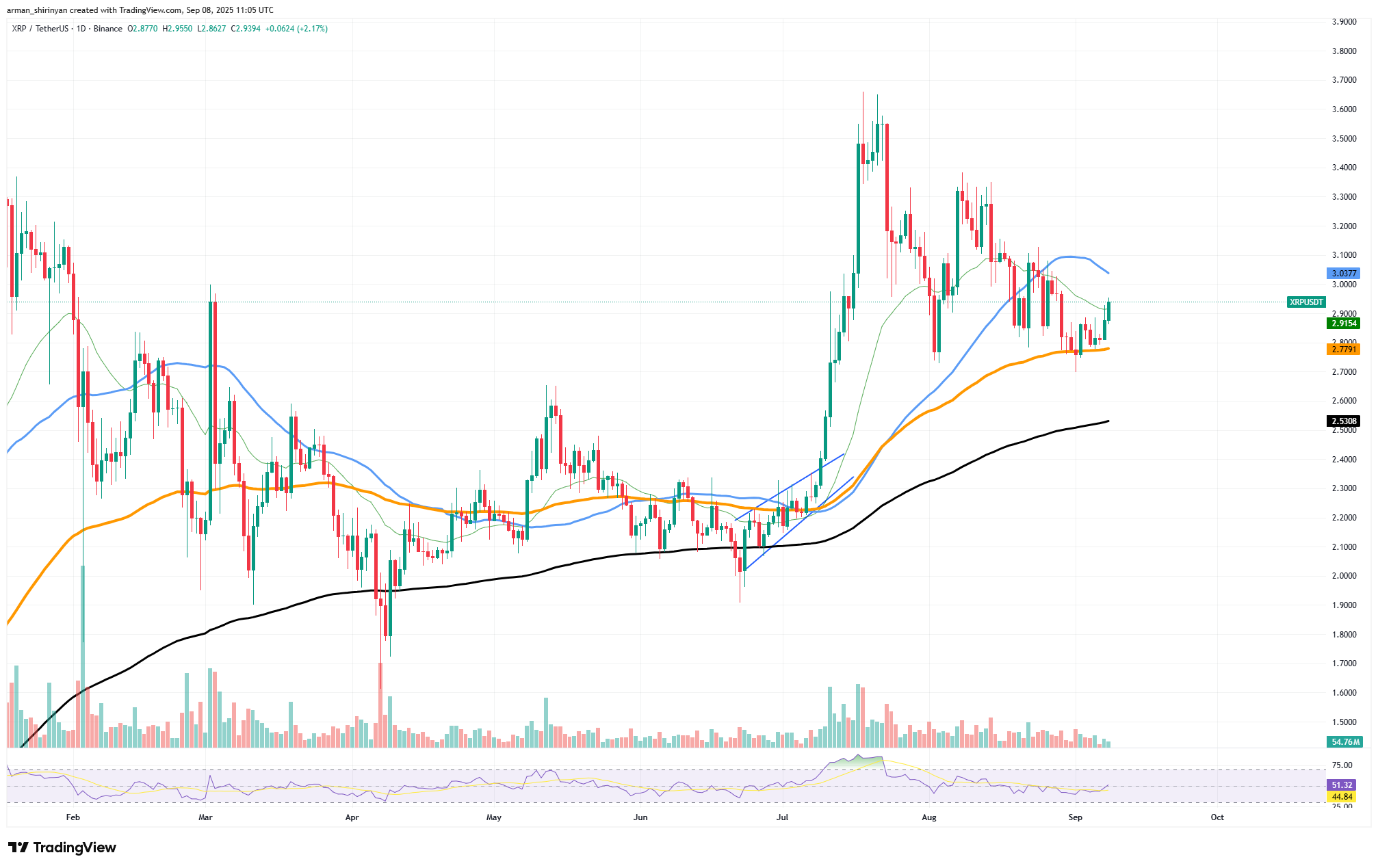XRP exchange inflows have surged, with more than $10.3 billion parked on exchanges after a ~300 million XRP 24-hour inflow, signaling imminent volatility in XRP price as liquidity concentration can lead to either sharp sell-offs or pre-rally positioning.
-
Massive exchange inflows: +300M XRP (~$10.3B) in 24 hours
-
Price testing key support at $2.77; current trading near $2.95
-
Critical resistances: $3.07 (50-day EMA) and $3.30–$3.50; downside support at $2.53 (200-day EMA)
Meta description: XRP exchange inflows surge to $10.3B, driving volatility risk — monitor $3.07 resistance and $2.77 support for trading signals. Read COINOTAG analysis.
What is driving the recent XRP exchange inflows?
More than $10.3 billion worth of XRP is currently sitting on exchange reserves after an estimated +300 million XRP moved onto exchanges within 24 hours. This concentration of tokens increases short-term liquidity and typically precedes significant price moves as traders and institutions adjust positions.
How does XRP’s market structure look after the inflow spike?
From a market-structure perspective, XRP tested the $2.77 support earlier this month and has since recovered to about $2.95. The recovery from the 100-day EMA indicates bulls retain influence, but the immediate test is the 50-day EMA resistance near $3.07.

XRP/USDT Chart by TradingView
The abrupt exchange inflows create two plausible paths: tokens may be sold into order books causing a pullback, or they may be held for market-making and positioning ahead of a rally. Current on-chain metrics and exchange balance shifts—reported as plain text in market monitoring datasets—point to active reshuffling by large holders.
What technical indicators are most relevant right now?
RSI sits around 51, which is neutral and signals that momentum could swing either way. Pay attention to moving averages: the 100-day EMA provided support and the 50-day EMA at $3.07 is the short-term gate for bulls. The 200-day EMA at $2.53 is the next material support if $2.77 fails.
How should investors interpret large exchange inflows?
Large inflows are a liquidity signal, not a directional certainty. Historically, similar inflow events preceded both profit-taking sell-offs and pre-rally positioning by whales. Context matters: volumes, order-book depth, and nearby resistance levels determine whether inflows translate to bearish or bullish price action.
Frequently Asked Questions
How long do exchange inflow-driven moves usually last?
Exchange inflow-driven moves can span hours to weeks depending on the size of the inflow, market participation, and macro catalysts. Short-term volatility often occurs within 24–72 hours after large inflows are observed.
Should retail traders act on the $3.07 resistance or wait?
Retail traders should consider waiting for a confirmed break and retest above $3.07 with volume confirmation, or use tight risk controls if trading intraday around the level.
Key Takeaways
- Exchange inflows surged: +300M XRP (~$10.3B) in 24 hours, concentrating liquidity on exchanges.
- Key levels matter: Immediate resistance at $3.07; support at $2.77 and $2.53 (200-day EMA).
- Volatility likely: Large players’ actions will determine direction—use stops and scale positions accordingly.
Conclusion
This COINOTAG analysis shows that current XRP exchange inflows have materially increased near-term volatility risk while technicals remain balanced between bulls and bears. Monitor $3.07 and $2.77 closely, manage position sizing, and follow exchange reserve trends for signals on the next major move.
